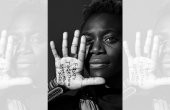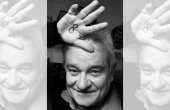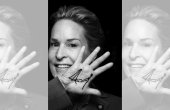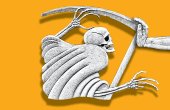The Extraordinary Path of Nobel Laureate Françoise Barré-Sinoussi
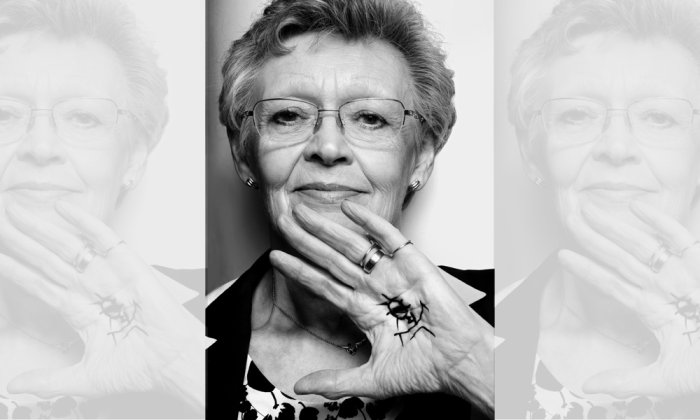
What makes a brilliant scientist? Who are the people behind the greatest discoveries of our time? Connecting art and science, photographer Herlinde Koelbl seeks the answers in her book “Fascination of Science,” an indelible collection of portraits of and interviews with 60 pioneering scientists of the 21st century. Koelbl’s approach is intimate and accessible, and her highly personal interviews with her subjects reveal the forces (as well as the personal quirks) that motivate the scientists’ work.
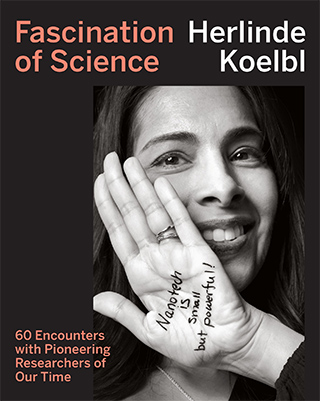
“I wanted to know how they think and with what insights they influence our lives, our future,” writes Koelbl in the book’s preface. “To this end, I traveled halfway around the world to ‘research’ these top scientists and to pass on their fascinating scientific results and life experiences — in other words, to bring science to life.”
The following conversation with Françoise Barré-Sinoussi, a virologist who won a Nobel prize in 2008 for the codiscovery – 25 years prior – of the human immunodeficiency virus (HIV), concludes our monthlong series of interviews with pioneering scientists, all excerpted from Koelbl’s new book. Other interviews in the Fascination of Science series include:
AUGUST 1st: Frances Arnold / A pioneer in the field of “directed evolution,” a genetic engineering acceleration of random mutations, who was awarded the Nobel Prize in Chemistry in 2018. Read the discussion here.
AUGUST 7th: Paul Nurse / Biologist, geneticist, and Director of the Francis Crick Institute, who was awarded the Nobel Prize in Medicine in 2001 for his discoveries concerning the regulation of the cell cycle. Read the discussion here.
August 14th: Tolullah “Tolu” Oni / Public Health Physician scientist and urban epidemiologist, who seeks to improve public health systems and address external influences on the health of urban populations. Read the discussion here.
—The Editors
Professor Barré-Sinoussi, does it ever give you pause to realize just how big an impact you have had on the lives of others?
I wasn’t alone. They don’t call it the HIV/AIDS community for nothing. We’re scientists, activists, representatives of patients, doctors, nurses, all the medical staff. We are countless people who have been fighting for the same objective since 1981. We are all in it together, and we each make up a tiny piece of the puzzle. That’s all I am: a piece of the puzzle.
That’s very modest.
No, that’s the reality.
You faced a lot of prejudice early on in your career. What were some of the things you had to overcome?
I was told that women had never accomplished anything in science, so I would be better off rethinking my career. Forget your dreams, they said, women should stay at home and take care of the children.
Good thing you didn’t listen to them. You went on to win the Nobel Prize for discovering HIV.
That was the mentality when I became a scientist back in the early 1970s. Of course, a lot has changed since then.
What kind of a mindset did it take to overcome obstacles like that?
Motivation is key. So is patience and a willingness to give to others. This was critical for me. If you’re only doing science for your own enjoyment, or for publishing papers and improving your CV, it won’t be as motivating as if you are developing tools for the benefit of patients. For me, my driving force has always been to help patients.
“My driving force has always been to help patients.”
You were so involved with your work that you nearly missed your own wedding. Tell me the story.
I was here at the Pasteur Institute. It was around 11 a.m. when my then-fiancé called me and said, “You know, the family’s all here because we’re supposed to be getting married today.” I told him, “Oh, my God, it’s already 11! I’m coming!” He wasn’t surprised at all. I hadn’t forgotten that we were getting married; I simply lost track of time.
Most of the time, it’s male scientists who have the wife at home who takes care of everything. But for you, it was different: your husband has a wife who’s the scientist. How did he handle this?
Very well. He loved freedom himself. That’s probably why we got along so well. He knew that if I was going to be in a relationship, it would be crucial for me to continue doing what I love. He used to tell other people, “I know that on her list, I’m not number one. Number one are her parents. Number two is her cat. Number three is the lab, and I’m number four.”
That was a progressive attitude for the time.
I can tell you that my father was the opposite. He often told my husband, “I don’t understand how you can accept the kind of life she’s giving you. If it were me, I wouldn’t accept it. You don’t have the courage to try and correct her.” And my husband would say, “That’s my problem, not yours.”
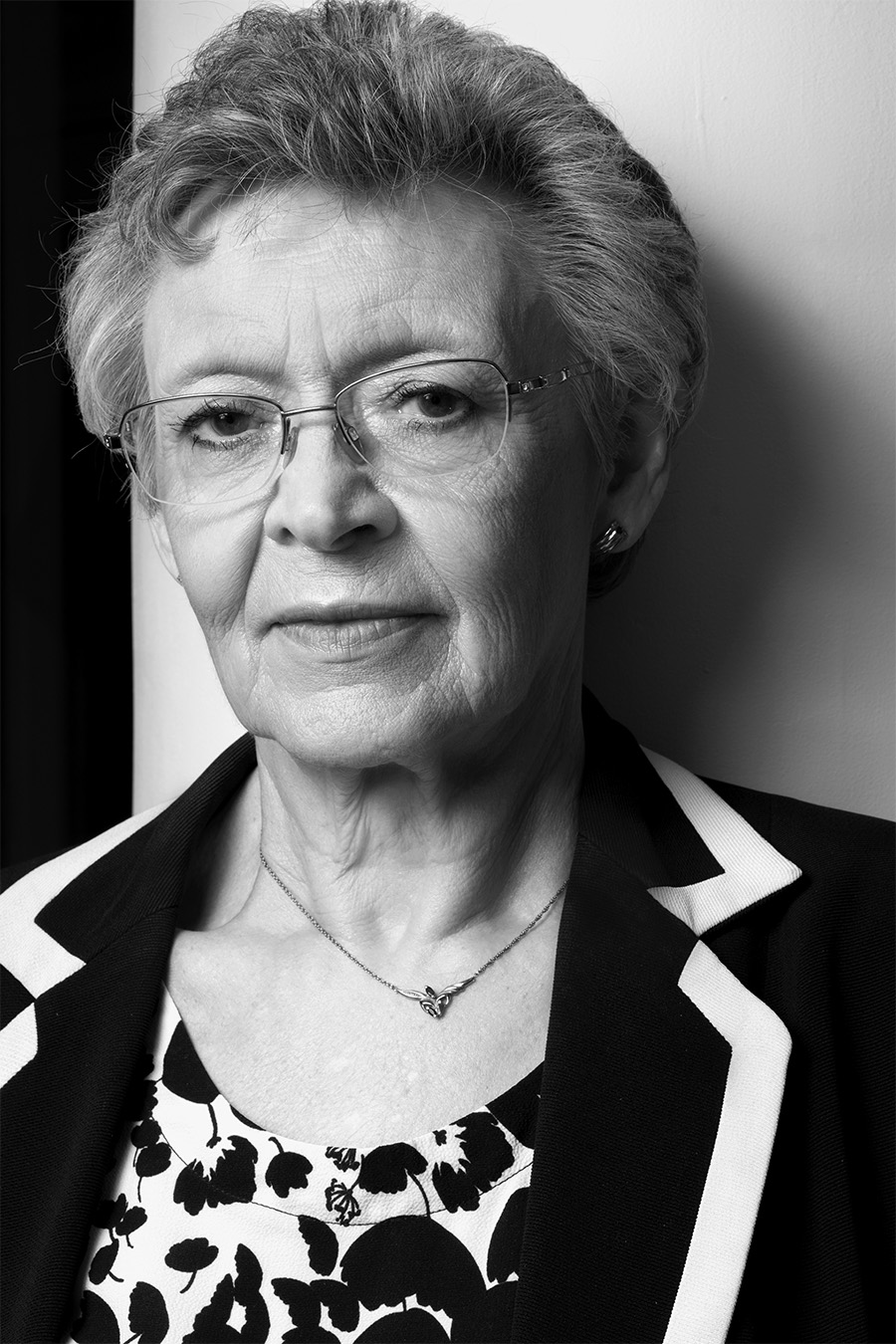
You had trouble finding a lab to work in at first. Why was that?
At the time, labs were not accustomed to accepting students as young as I was. I had been at university only for two years. In the 1970s, it was not common for students to start working in laboratories before they got their master’s degree. Fortunately, I found a lab, the Pasteur Institute, that kindly accepted me as a volunteer. They were working on a family of viruses called retroviruses.
HIV is a type of retrovirus. So, your early work as a volunteer at the Pasteur Institute was a springboard to your later success. What happened next on your path to discovering HIV?
AIDS was first identified in the United States in 1981. In 1982, a French clinician called us at Pasteur to ask whether we would be interested in trying to find the cause of AIDS. So, Luc Montagnier, who took the call, came to me, and asked whether our lab would be keen. I said, “Of course, I’ll have to talk to my boss, but if he agrees, we can do it. We have the tools to at least try to find out whether a virus from this family is involved.”
We tried to isolate the virus in a patient who did not yet have AIDS, but did have what we called at the time “pre-AIDS symptoms.” The clinicians would describe to us all the symptoms of the patients — the evolution of the disease as they saw it in the hospital. It was through this exchange of information that we could design our experimental approach to identify the causative agent. Eventually, we got a lymph node biopsy, put the cell in a culture, and that was how we isolated the virus.
What was that moment like for you?
It wasn’t one moment. It never is in science. It’s several successive moments that build to a discovery. The first sign that there may have been a virus in the culture came when I detected enzyme activity related to this family of viruses. But there was still a lot of work left to do. Eventually, we looked at the culture under the microscope and saw particles — viral particles the same size as retroviruses. But even then, we didn’t have proof that the virus was the cause of the disease. It was a long process until we could say, “Yes, this virus really is the cause of the disease.” That didn’t occur until 1983, and it was confirmed in 1984.
What was it like for you to present your findings?
Some people didn’t believe me. Some scientists thought the findings needed to be confirmed by others. We really had to keep working to convince the scientific community. Eventually, another team in the United States, led by Bob Gallo, also managed to isolate the virus and confirm it as the cause of AIDS.
Speaking of Robert Gallo, after your discovery, his lab began claiming that they had, in fact, discovered the virus. An acrimonious legal battle ensued, and the American and French presidents at the time, Ronald Reagan and Jacques Chirac, even got involved. What exactly happened?
I’m not going to go into detail about that. It was a fight between institutions, and it’s over. It’s since been recognized that the discovery was made in France and not in the United States. I refuse to talk about it, though I’m happy to tell you why.
Please do.
When I gave public conferences during this, shall we say, Franco-American conflict, there would sometimes be patients in the room who would interrupt me and say, “Stop it, we don’t believe you anymore, you scientists. The only thing you are interested in is fighting each other.” Some patients refused to go to the doctor because they didn’t trust the medical or scientific communities anymore. The conflict had a terrible impact.
Was it this impact that sent you into a depression?
My depression came later, in 1996. It was related to the fact that for more than 10 years, there had been terrible pressure on the scientific and medical communities to do something about HIV and AIDS. For me, as a scientist, it was the first time I had been in direct contact with people who were affected by a disease as I worked on it. I became good friends with some of them, and I watched them die. As a scientist, I knew it would take time to develop a treatment. But as a human being, it was unacceptable to see people as young as 30 or 35 dying under such terrible conditions.
“As a scientist, I knew it would take time to develop a treatment. But as a human being, it was unacceptable to see people as young as 30 dying under such terrible conditions.”
How did you finally pull yourself out of the depression?
I had to go to hospital and get treatment. It took me more than a year to fully recover. In the meantime, I tried to work as much as possible, even though I wasn’t in good shape at all. I remember calling one of my American colleagues and asking if he could come to Paris to help run my lab, and he did.
There’s a story about a patient who held your hand. Would you tell it?
That was back in the 1980s. I gave a seminar at San Francisco General Hospital, and afterwards one of the clinicians asked me whether I would be willing to see a man dying of AIDS, who wanted to meet me. So, I went to the emergency room. He was in terrible shape. He had some trouble speaking. I could only guess what he was saying by reading his lips. When he said, “Thank you,” I asked, “Why?” He said, “Not for me; for the others.” That I will remember all my life. He died the next day.
When you have this kind of experience, it changes your motivation. You stop doing things for yourself and you try to give people the tools they need to stay alive. Just to be alive.
I’ve read that about 35 million people have died from AIDS.
Yes, and today there are 37 million people living with HIV. These people are alive, yet only 60 percent of them are on treatment. This is unacceptable.
How do you react when people say you’re not just a scientist — that you’re an activist as well?
Of course, I am an activist. So much work went into achieving a diagnostic tool and a treatment, and now we even have a tool for prevention. There has been enormous scientific progress—and yet people are still dying of AIDS. How can I accept this? I cannot. It’s a matter of equality. Everybody has a right to live.
Back in 1985, you visited sub-Saharan Africa for the first time. What was that like?
The first thing I noticed was the suffering. Some people had polio and couldn’t walk. They were walking on their hands in the street. Others were in bad shape, too, not from HIV but from other diseases. And yet, one thing stood out immediately: They were all enjoying life. They had smiles on their faces. They were playing music and dancing. That was my first shock. How could these people, in their condition, look happy? They had taken those small moments of happiness and made them their objective in life.
How were the HIV patients treated in Africa at the time?
We visited the hospital and realized that a lot of people were dying from HIV/AIDS and the hospital couldn’t do anything for them. This was in the 1980s, so there wasn’t a treatment, but they weren’t receiving any care. Not even drugs to help them die. Not even palliative care. Nothing. The doctors could only hold the hand of a dying patient. Seeing this is why many of us — not just me — decided to start working in Africa.
Would you say that experience inspired you to work more intensively?
Well, I was already working quite intensively, so I don’t know about that. But it prompted me to work even more with HIV, that’s for sure. It was a nightmare for my husband, though; I hardly saw him at all, since now I wasn’t only working a lot but also traveling.
I heard that when the people from the Nobel Committee tried to inform you that you had won, they couldn’t find you. Is that right?
That’s right. I was in Cambodia at the time, helping to coordinate France’s and Cambodia’s bilateral work on HIV/AIDS. We were in the middle of a meeting about a clinical trial when the call came in. It was an important meeting. My phone rang, and it was a journalist from the national radio network. I thought they were calling about yet another drama.
Because your husband, who worked for the national radio, had recently passed away?
Exactly. And the woman didn’t immediately tell me why she was calling. She asked, “You don’t know?” I said, “No, I don’t know. What’s going on?” And she started to cry on the phone. I told her, “Stop it! Tell me what’s going on.” When she finally composed herself, she said, “You got the Nobel Prize!” I said, “I don’t believe you,” and hung up.
You hung up?
I hung up. Then my phone rang again. It wouldn’t stop ringing. We were in the middle of this meeting, so my colleagues said, “Françoise, give us your phone.” Once we figured out what was going on, people started bringing food and flowers. They even organized a celebration at the French Embassy in Cambodia. It was really a very, very moving moment.
What did it take for you to accomplish what you did?
Patience, for one. Extreme patience. One of my colleagues who knew I loved cats once said to me, “I wonder if, in another life, you weren’t a feline yourself because you are so patient. You make your observations for months, years. You always have to be absolutely sure before you’re ready to pounce.” I thought that was a good comparison.
Did you ever doubt yourself as a scientist?
You have to; otherwise you’re not a good scientist. A scientist must always question whether they’re heading in the right direction. It’s like a game, you know. You never know when you’ll win, but you know that you can always lose. For me, this is doubt. If you’re too sure of yourself, you’re not a good scientist.
“If you’re too sure of yourself, you’re not a good scientist.”
When you were doing your research on the HIV virus, were you doubtful?
In science, you make a hypothesis, decide on an approach to verify it, and then get your results. During that time, all our results were positive. Nothing like this had ever happened to me before. It was wonderful — too wonderful, somehow. I knew it had to stop. And, of course, it did. Particularly when we began working on a vaccine. That was a failure. That’s when we started to realize that everything was much more complex than we thought.
Did it make you happy to finally discover the virus?
Happy? No. People were dying. How could I be happy when people were dying? My feeling was, We must hurry. We can’t keep seeing people die like this.
How did you feel when an effective treatment finally had been developed?
That was such a relief. First for the patients, then for us. Ten years had passed between the discovery of the disease and the development of a treatment. Suddenly, we had the data that a combination of treatments would allow people with HIV to live.
Now that it’s possible to prevent the spread of HIV, where do things go from here?
This will be an extremely difficult virus to cure. With the knowledge we have today, and with the existing tools and the technology, it won’t be possible. But we must be able to achieve durable remission of treatment in the future. In addition, there are wonderful tools in the works right now, like implants that deliver antiretroviral treatment. This is wonderful, but it’s not enough.
I am a bit worried about the future because we’re starting to see resistance to treatment developing in Africa and Asia. I’m worried that resistance will spread. That would be a nightmare. A re-emerging HIV epidemic would be terrible. It would be the worst failure of my life.
How are you spending your retirement?
In France, once you reach retirement age, they close your lab. That’s the regulation. But I’m still very busy. I’m the president of an NGO in France that supports scientists and communities involved in access to HIV prevention and treatment, plus I’m the honorary president of the International Institut Pasteur Network and a member of many scientific advisory boards.
What is your message to the world?
Life is short. And life is the only thing that matters. I would tell others to be tolerant because it is important for peace. It’s also important to fight against inequality. Science can achieve all the progress it wants, but if people don’t accept or help each other, that progress will be very slow.
Herlinde Koelbl is a German photographic artist, author, and documentary filmmaker. She has published more than a dozen photography books and has received numerous awards for her work, including the Dr. Erich Salomon Prize in 2001. You can learn more about her at www.herlindekoelbl.com. This interview is excerpted from her book “Fascination of Science.”
